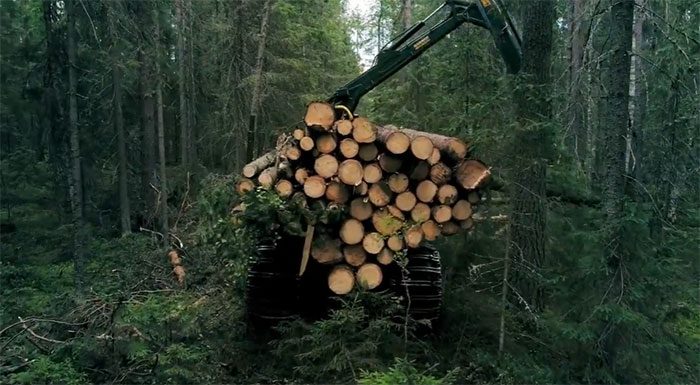A team of scientists from the Massachusetts Institute of Technology (MIT) has invented a laboratory-based plant cell cultivation technology, which is then utilized for 3D printing various types of wood on demand.
Stop cutting down trees! Will this slogan remain a forever call to action? We have destroyed trees as if they grow overnight and as if their numbers are limitless.

Uncontrolled deforestation is one of the main causes of climate change.
A global forest survey indicates that since the dawn of human civilization, we have wiped out 54% of the total trees on Earth, even though it is well-known that deforestation is one of the leading causes of climate change, heatwaves, droughts, and tsunamis.
We continue to chop down trees on a massive scale daily to produce items such as paper, wax, medicine, rubber, and furniture. Some products are so essential to our lives that we cannot imagine how life would be without them.
This raises the question: Will we continue to cut down trees to satisfy our needs and desires?
In the future, the issue of deforestation may become irrelevant. It all could start with a groundbreaking invention published in Engineer in May 2022. A study published in the journal Materials Today clarified the nature of a type of wood cultivated in the world’s first 3D printing laboratory. From this research, scientists at the Massachusetts Institute of Technology (MIT) have demonstrated that deforestation is no longer necessary for wood production.
Wood Production Without Cutting Trees
The authors at MIT, based on their research findings, have created customizable wood in the laboratory from the cells of a flowering plant known as Zinnia elegans, commonly referred to as the common zinnia. The research team claims that this entirely novel method allows them to biologically print wood pieces in any shape and size. This means that if a wooden table is needed, the new technology can directly produce a wooden table from cells.
With this technology, there will be no more deforestation or waste, unlike the traditional process of producing wooden furniture. This miraculous result is achieved by processing common zinnia cells, first in a liquid medium and then in a gel solution. The gel solution consists of hormones and nutrients.
Artificial plant material from cells, the new 3D printing technology produces various types of wood. (Video Finite Future).
By altering the concentration of these hormones, researchers can control the hardness, strength, density, and many other physical and mechanical properties of the laboratory-grown plant material.
Emphasizing the significance of the research, the scientists wrote in the paper: “This research proposes a new method for creating plant materials, which can be tailored through 3D printing from cell cultures, with the potential to reduce waste, increase yield and production rates, and decrease environmental disruption, as the cultures are generated from a sample plant, without sacrificing entire vegetation.”
This is Just a Small Step
After completing the research at MIT, the lead author of the study, Ashley Beckwith, founded a company named FORAY bioscience to continue developing new techniques and methods for wood cultivation without cutting down trees. The current method, which involves developing plant materials from common zinnia cells, is just the first step in this cell-based industrial development.
This is also the first method to use tissue engineering to produce plant materials in the laboratory. Until now, scientists have only used this method for animal cell cultures.
“Similar concepts have not yet been transferred to the plant cell culture space, especially for material production techniques. Therefore, this project represents the first glimpse into the agricultural cell approach for creating plant materials,” the researchers commented in their scientific report.
Beckwith and the research team are currently planning to 3D print wood in the laboratory from cells of trees such as pine. If the FORAY bioscience team succeeds and gains recognition, the world may find a solution to end deforestation.





















































